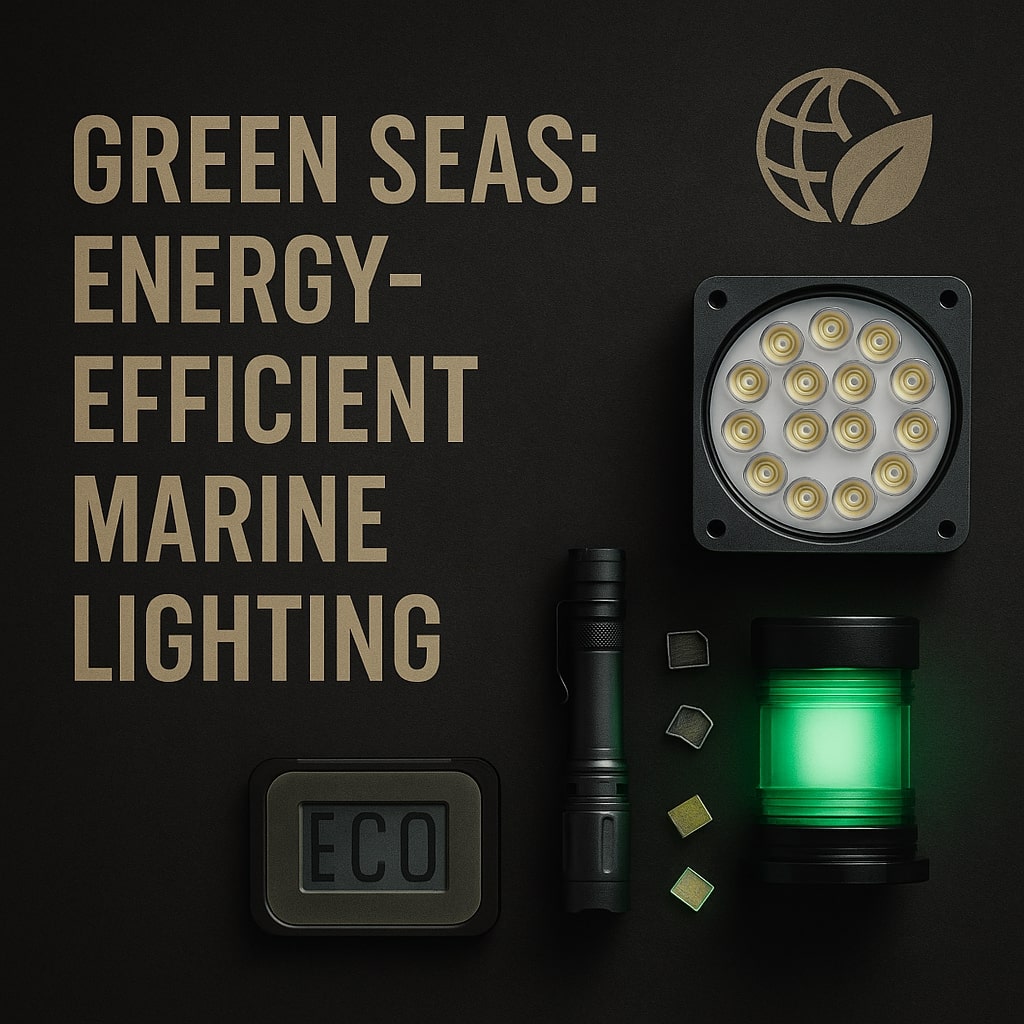Green Seas: Marine Lighting Reducing Environmental Impact
Modern vessels rely more than ever on energy-efficient lighting to reduce fuel consumption, lower emissions and improve visibility in challenging maritime environments. LED technology has become the standard for marine lighting thanks to its long lifespan, low power draw and strong performance under saltwater, vibration and temperature exposure.
This guide explains how energy-efficient marine lighting works, why ships benefit from upgrading to LED systems and what to consider when selecting lighting for marine applications.

Why Energy Efficiency Matters on the Water
Every watt saved on a ship reduces strain on generators and contributes to lower operating costs.
Efficient lighting also:
-
Extends battery autonomy on marine emergency lighting systems
-
Reduces maintenance frequency
-
Minimises heat generation around sensitive equipment
-
Supports sustainability goals and emission-reduction policies
Marine LEDs are engineered for efficiency even under shock, salt spray and continuous vibration.
Benefits of LED Lighting for Marine Use
LED technology offers several advantages over older fluorescent or halogen systems.
Lower Power Consumption
LED fixtures use significantly less energy, allowing vessels to reduce generator load and fuel usage.
Longer Lifespan
High-quality marine LEDs last tens of thousands of hours, reducing the need for replacements in difficult-to-access areas.
For more detail on LED longevity, our article on how long LEDs last covers the performance factors that influence lifespan.
Improved Durability
LEDs are solid-state devices with no fragile filaments. They withstand movement, impact and vibration far better than halogen or fluorescent lamps.
Superior Visibility
LEDs provide clearer illumination with better colour rendering, improving safety during deck operations and machinery checks.
Marine Standards and Protection Requirements
Marine lighting must meet strict environmental and safety standards. Key requirements include:
-
High IP rating for water and dust protection
-
Corrosion-resistant housings
-
Shock and vibration resistance
-
Temperature-stable electronics
-
Compliance with IMO and SOLAS safety standards
Deck lighting often uses sealing principles similar to rugged vehicle lighting found in harsh environments.
Comparing Marine Lighting Technologies
| Lighting Type | Energy Use | Durability | Marine Suitability |
|---|---|---|---|
| LED | Very low | Excellent | Best overall |
| Fluorescent | Moderate | Poor | Sensitive to moisture |
| Halogen | High | Low | High heat output |
| Metal Halide | High | Good | Long warm-up time |
LEDs deliver the strongest balance between efficiency, ruggedness and optical performance.
Where Energy-Efficient Lighting Is Used on Ships
Efficient LED lighting is used across many parts of a vessel:
-
Deck illumination
-
Walkways and stairwells
-
Machinery spaces
-
Cabins and working areas
-
Navigation and signal lighting
-
Emergency systems and escape routes
Environmental Impact of Energy-Efficient Lighting
LED systems reduce emissions by lowering generator fuel consumption. They also contain no mercury or hazardous materials, making disposal cleaner than older fluorescent systems.
Complementary technologies such as photoluminescent and tritium-based markers can further reduce energy use in escape routes and low-light areas.
Summary
Energy-efficient marine lighting reduces power consumption, improves safety and delivers long life in demanding maritime environments. LED technology offers the best performance for deck operations, navigation, interiors and emergency systems while supporting sustainability and operational cost savings.
FREQUENTLY ASKED QUESTIONS
Yes. Marine-rated LEDs are built to resist saltwater, vibration and extreme weather, making them ideal for shipboard use.
Indirectly, yes. Lower electrical load reduces generator demand, which decreases fuel usage over time.
LEDs offer better visibility and colour accuracy, improving situational awareness and reducing the risk of accidents.

